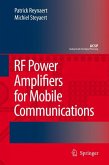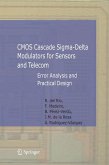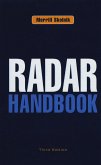Low Power UWB CMOS Radar Sensors deals with the problem of designing low cost CMOS radar sensors. The radar sensor uses UWB signals in order to obtain a reasonable target separation capability, while maintaining a maximum signal frequency below 2 GHz. This maximum frequency value is well within the reach of current CMOS technologies. The use of UWB signals means that most of the methodologies used in the design of circuits and systems that process narrow band signals, can no longer be applied.
Low Power UWB CMOS Radar Sensors provides an analysis between the interaction of UWB signals, the antennas and the processing circuits. This analysis leads to some interesting conclusions on the types of antennas and types of circuits that should be used. A methodology to compare the noise performance of UWB processing circuits is also derived. This methodology is used to analyze and design the constituting circuits of the radar transceiver. In order to validate the design methodology a CMOS prototype is designed and experimentally evaluated.
Low Power UWB CMOS Radar Sensors provides an analysis between the interaction of UWB signals, the antennas and the processing circuits. This analysis leads to some interesting conclusions on the types of antennas and types of circuits that should be used. A methodology to compare the noise performance of UWB processing circuits is also derived. This methodology is used to analyze and design the constituting circuits of the radar transceiver. In order to validate the design methodology a CMOS prototype is designed and experimentally evaluated.








